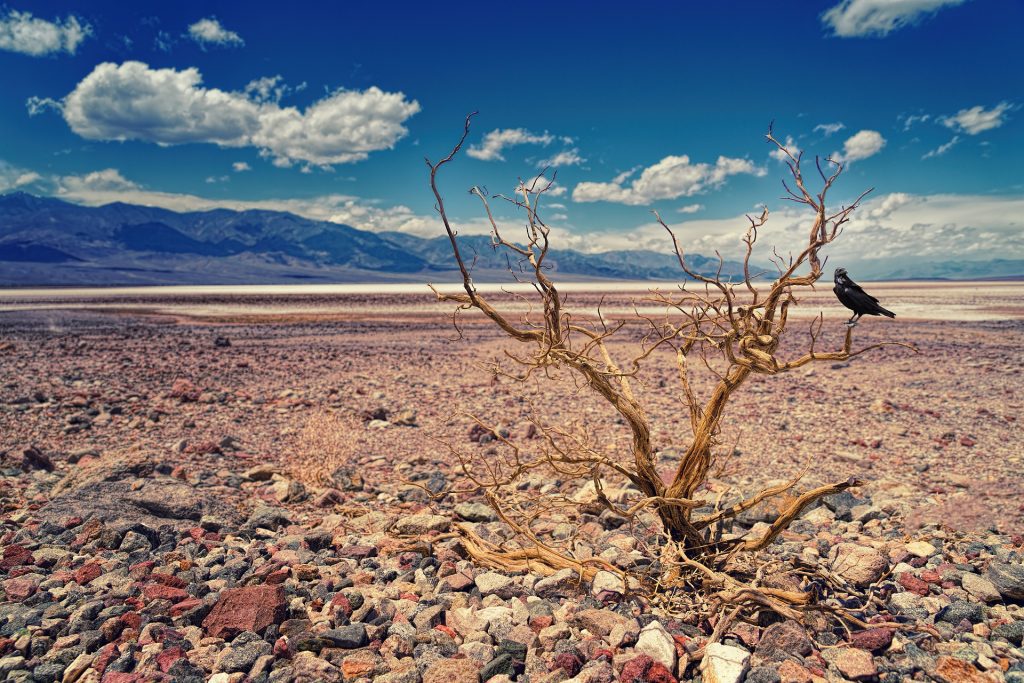Death Valley set a new temperature record of 130 °F on August 18, 2020. The National Weather Service says this will be the hottest August ever recorded in Death Valley and the highest Death Valley temperature in over a century. Is this a sign of global warming or just an extreme weather event?
In July 2020, the American Meteorological Society reported that in each decade since 1980, the earth was warmer than it had been in the previous decade, with 2010-2019 being the hottest since record-keeping began more than a century ago. Greenhouse gases continue to rise as the world fails to limit emissions. In 2019, 55 billion metric tons of greenhouse gases were dumped into the atmosphere, a new record, pushing the carbon dioxide concentration 40 percent higher than any time in the last 800,000 years.
The highest Death Valley temperature ever recorded was 134 degrees Fahrenheit on July 1913. There is some doubt as to the accuracy of the 1913 reading which could be in error.
If the latest temperature reading of 130°F confirmed by The World Meteorological Organization (WMO) it will go down as the hottest temperature ever reliably recorded on earth. There are likely to be hotter places on earth but the temperatures at these locations cannot be reliably recorded due to their remote locations and harsh conditions that make it impractical to maintain weather stations to accurately measure local temperatures.
Why is Death Valley so hot? It is a depression at the northern end of the Mojave desert, the driest location in North America. The Mojave is in the rain shadow of the Sierra Nevada mountains which blocks moist air from the Pacific Ocean. Death Valley receives only about two inches of rainfall in a year. It is also the lowest point in North America at 282 feet below sea level.
There are several lower desert areas in the world such as the Dead Sea (1360 feet below sea level) or the Danakil desert in Ethiopia (435 feet below sea level). The WMO reports that Sedom, Israel near the Dead Sea recorded a record high of 122 °F, while Danakil has a record high of 125°F.

